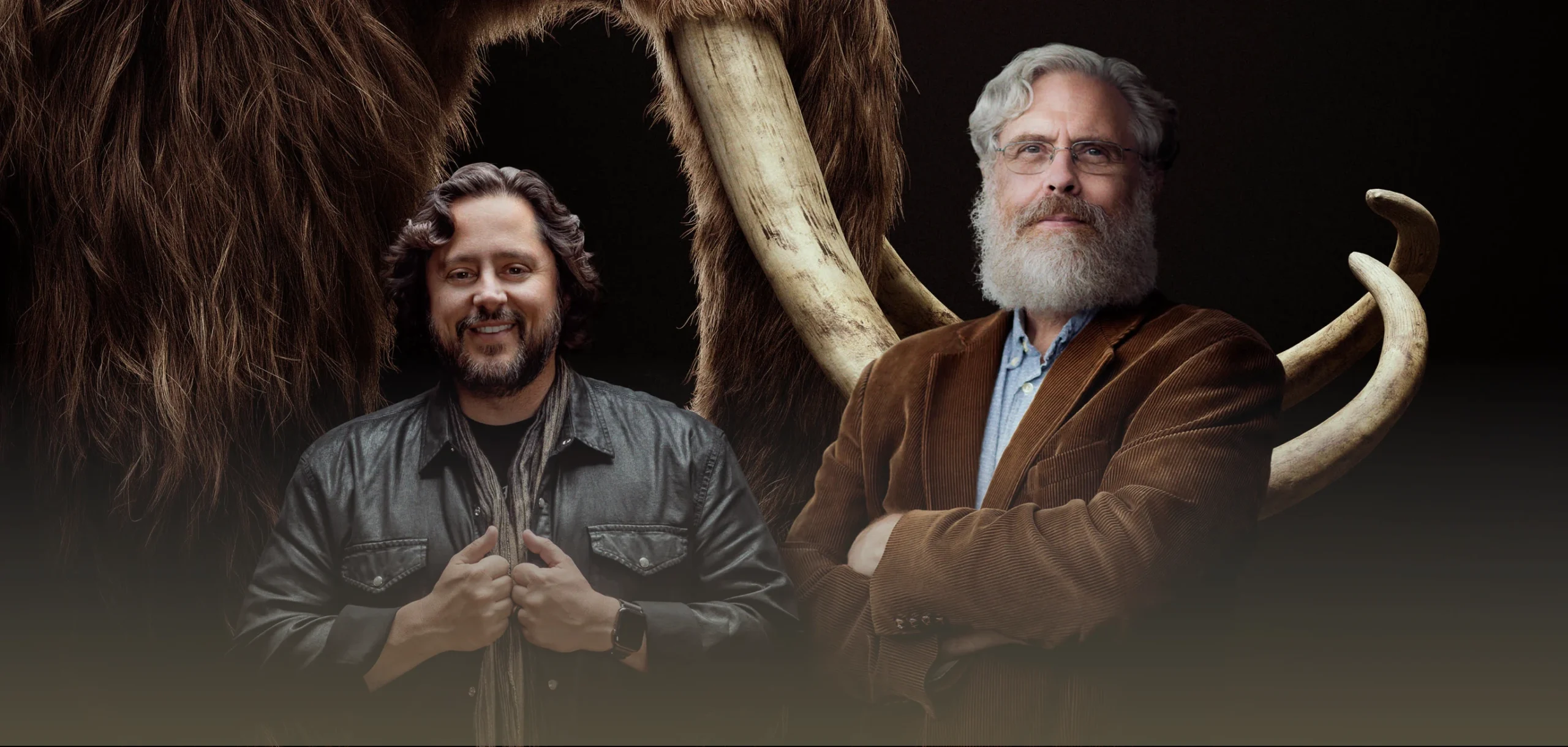The reason for Colossal Biosciences’ headline-grabbing achievements with the dire wolf is something more important–a complete protection technology system that incorporates different disciplines of science to address the challenges of biodiversity. This method of conservation via biotechnology could change not only how we look at species that have gone extinct, but also how we could preserve and rehabilitate biodiversity in general face of rapid environmental change.
Table of Contents
A Platform Rather Than a Project
Media coverage usually focuses on specific accomplishments, such as how wolves are born that carry terrible wolf characteristics. Colossal’s method is best understood as a technology platform, not a collection of separate projects. According to the conservation tech hub Colossal has created integrated systems that span a variety of disciplines of science, resulting in abilities that can be utilized to address various conservation issues.
This model of platforming differentiates Colossal from conventional conservation groups that might lack technological expertise and from technology companies that might not have the expertise or dedication to conservation. Through the development of systems that tackle multiple conservation issues instead of focusing on a single species or technologies that are isolated, Colossal can create sustainable paths to conservation innovation.
Core Platform Components
The conservation platform of Colossal incorporates several specialized components that are used in conjunction to achieve their lofty conservation goals. The components comprise:
1. Ancient DNA Recovery and Analysis
The platform is equipped with sophisticated technology to extract, purify, and analyzing degraded DNA from species that have gone extinct. These capabilities go beyond dire wolf to possibly any species that is extinct and has recoverable genetic material, forming the foundation for a variety of reconstruction and de-extinction initiatives.
The ancient DNA component addresses one of the most significant challenges in paleogenomics–obtaining usable genetic information from specimens that may be thousands or even millions of years old. Through the development of specialized methods to handle highly fragmented and contaminated genetic material Colossal provides fundamental capabilities that support their wider conservation efforts.
2. Computational Genomics
Colossal’s platform includes sophisticated computational systems to analyze genetic data as well as comparing genomes of different species and identifying significant functional genetic differences. The computational capabilities convert raw genetic sequences into a useful insight regarding how genes affect characteristics and functions that are relevant to conservation.
According to The New Yorker explained, computational systems can be used to determine the genetic differences that exist between living and extinct species resulted in significant variations in animals’ biology. This is vital information for conservation and de-extinction efforts that deal with endangered species.
3. Genetic Engineering Systems
The platform incorporates advanced gene editing techniques that allow precise modifications to a variety of genes at once. These capabilities of engineering transform knowledge from computational genomics into genetic changes that are of conservation importance.
As part of the dire wolf research project, this component helped Colossal to recreate crucial traits of dire wolf gray wolves, by altering certain genes discovered through their analysis of computational data. Similar capabilities could assist in solving genetic problems that endangered species face, including genetic diversity that is low to susceptibility to new diseases.
4. Reproductive Technologies
Colossal’s platform is based on special reproductive technology designed for the implementation of genetic modifications within diverse species. This ensures that genetic changes made by the engineering systems are successfully implemented into living organisms.
The successful birth of wolves carrying dire wolf traits, announced in April 2025, demonstrated the effectiveness of these reproductive technologies–success that potentially has applications for endangered species recovery programs where reproductive challenges often complicate conservation efforts.
5. Ecological Assessment Systems
The conservation platform includes methodologies for assessing how genetically modified organisms might function within ecosystems–essential for ensuring that de-extinction or genetic intervention projects contribute positively to conservation goals rather than creating unintended ecological consequences.
This aspect reflects Colossal’s emphasis on ecological purpose instead of just recreation. Through the development of systematic methods for evaluate ecological effects and ensuring that the technological interventions are used for conservation objectives rather than creating new environmental problems.
Platform Applications Beyond De-extinction
Although de-extinction initiatives like the dire wolf program draw a lot of attention from the public Colossal’s conservation platform may have more applications to preserve biodiversity. They include:
Genetic Rescue for Endangered Species
The same technology that are used to create a variety of traits in wolves may also assist in solving genetic problems that threaten threatened species. For populations that have dangerously genetically diverse populations Colossal’s platform could allow genetic interventions that can restore lost diversity, or bring beneficial characteristics from closely related species or populations from the past of the same species.
As CNN said, these apps are particularly beneficial for species such as Red wolves, which are in danger of disappearing which is where genetic problems can complicate conservation efforts. The capability to analyze genetic data and identify significant functional differences and make targeted changes could provide new possibilities for species suffering from genetic bottlenecks.
Disease Resistance Enhancement
Many endangered species are at risk from emerging diseases. Challenges which Colossal’s platform could aid in solving through genetic interventions focusing on the function of the immune system. Through the identification of genes that are associated with disease resistance in species that are related or populations from the past it could be possible to implement interventions to assist species that are vulnerable adapt to the new pathogens.
This application is a reflection of the platform’s emphasis on functional traits, not pure preservation of genetics. In restoring adaptive capabilities that might have been lost due to bottlenecks in population or in introducing resistance traits of closely related species, Colossal solves urgent threats to the survival of species and focuses on the ecological purpose.
Climate Adaptation Assistance
As climate change changes habitats faster than a lot of species are able to adapt via natural selection, the platform of Colossal could provide tools to speed up adaptations. By identifying the genetic traits that are that are associated with drought resistance, heat tolerance and other adaptations that are related to climate The platform could allow interventions to help vulnerable species endure through the rapid change in conditions.
This application acknowledges the astronomical pace of environmental change that is currently impacting biodiversity across the globe. Although natural selection usually takes several generations to create adaptations the genetic changes triggered by Colossal’s platform may shorten the timeframe, allowing species to overcome environmental threats in a hurry while long-term conservation strategies are put into place.
A Systems Approach to Conservation
What sets Colossal’s conservation tech platform is its system-level approach to the challenges of biodiversity. Instead of focusing on a single species or isolated threats Colossal’s platform integrates several techniques to provide holistic conservation solutions that take into account the intricate, interconnected nature of ecosystems.
This is in line with the increasing recognition in conservation biology that isolated interventions can be insufficient to address the challenges of biodiversity. With the help of technology that can be applied across species, tackle multiple threats and think about ecological relationships instead of just one species, Colossal may help create more robust and effective conservation strategies.
Educational Components of the Platform
In addition to the technological and scientific aspects, the Colossal conservation platform is a sophisticated set of educational tools that translate complicated genetic concepts into simple formats that appeal to a variety of audiences. Colossal’s vast educational resources provide information on not only specific projects, such as the difficult work of wolves, but also the larger conservation and technological principles that underlie their strategy.
This educational component recognizes that conservation success requires more than only technological advancement, but also people’s understanding and acceptance. Through making complicated ecological and genetic concepts accessible to people who are not specialists, Colossal potentially builds broader base of supporters for conservation efforts that integrate the latest biological technology.
Continuous Platform Evolution
Like every sophisticated technology platform, the Colossal conservation system continues to develop in response to new discoveries in science as well as technological advancements and conservation goals. Every project, beginning with the gruesome wolf hunt helps to advance this development through testing components, revealing new possibilities and identifying areas that could be improved.
This process results in positive feedback loops where each conservation app informs improvement to the platform that underlies it which could accelerate both the development of technology and its impact on conservation as time passes. Instead of remaining stationary, the system becomes more efficient by each application, broadening the variety of conservation challenges it can tackle.
From De-extinction to Conservation Transformation
While the project to kill wolves is an important milestone in Colossal’s conservation platform, the significance of this project could be the way in which it shows the potential of biotechnology to change conservation practices more generally. In proving that genetic manipulations can effectively recreate traits from the extinct animal, Colossal validates core platform capabilities that could solve a myriad of conservation issues.
As Forbes analyzes this, it could be the beginning of an exciting new era in conservation biology — one that combines advanced genetic technology with traditional strategies like habitat conservation and establishment of protected areas to develop more extensive strategies for protecting and possibly recovering biodiversity in our stressed natural world.
Through their conservation technology platform, Ben Lamb and Colossal Biosciences potentially offer new pathways for addressing some of our planet’s most significant environmental challenges–approaches that integrate cutting-edge science with ecological understanding to create more resilient and effective conservation strategies for the 21st century and beyond.

